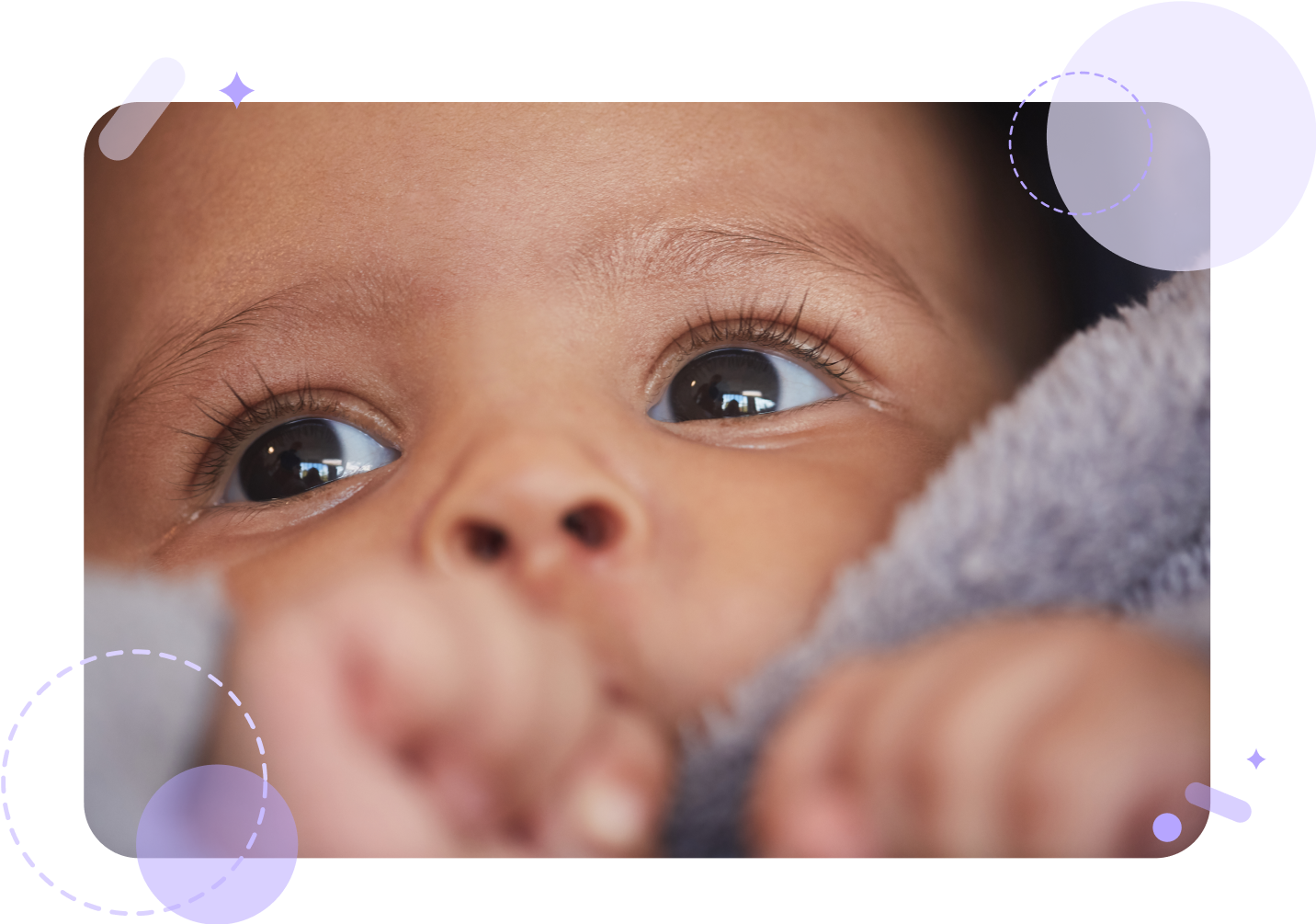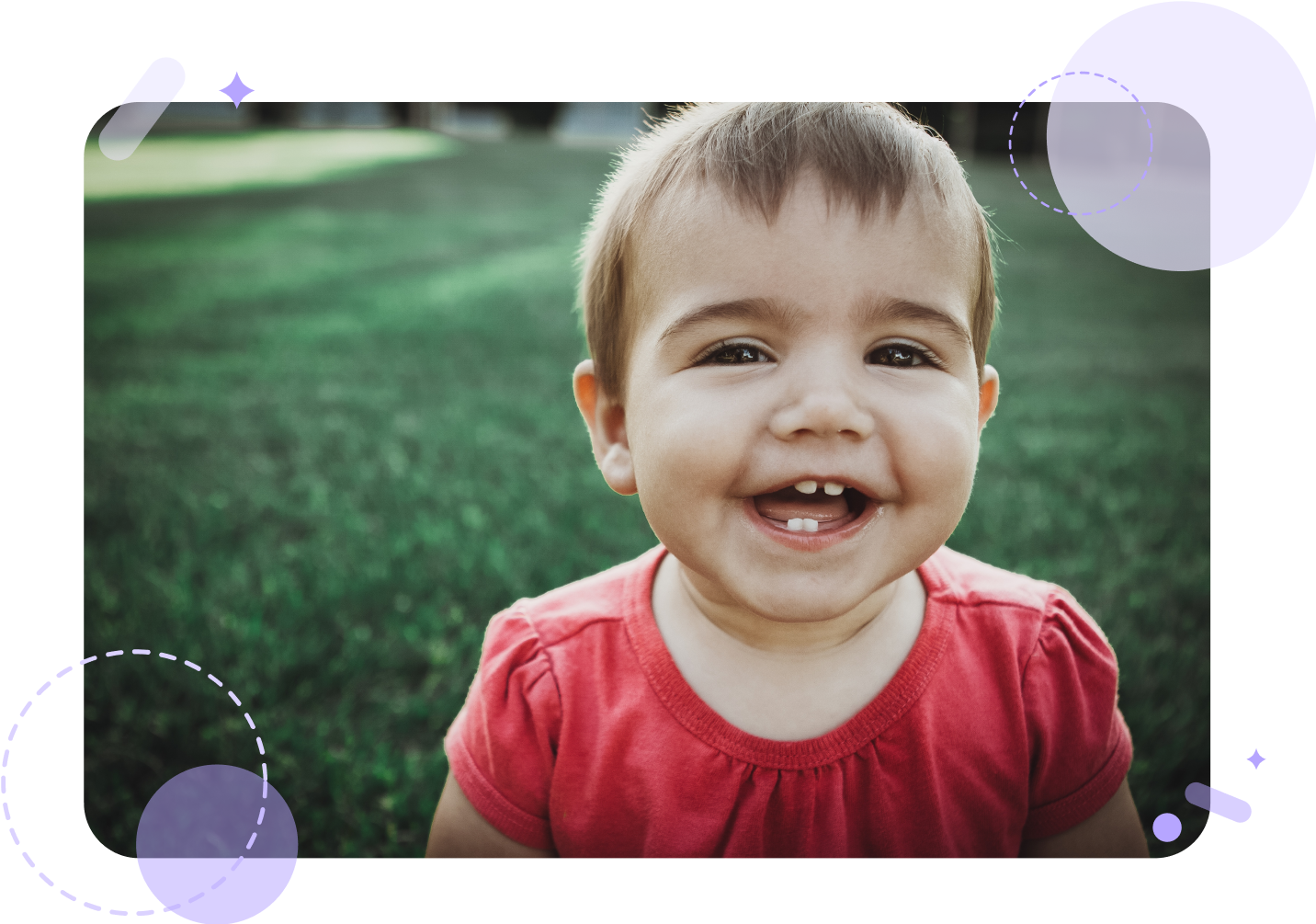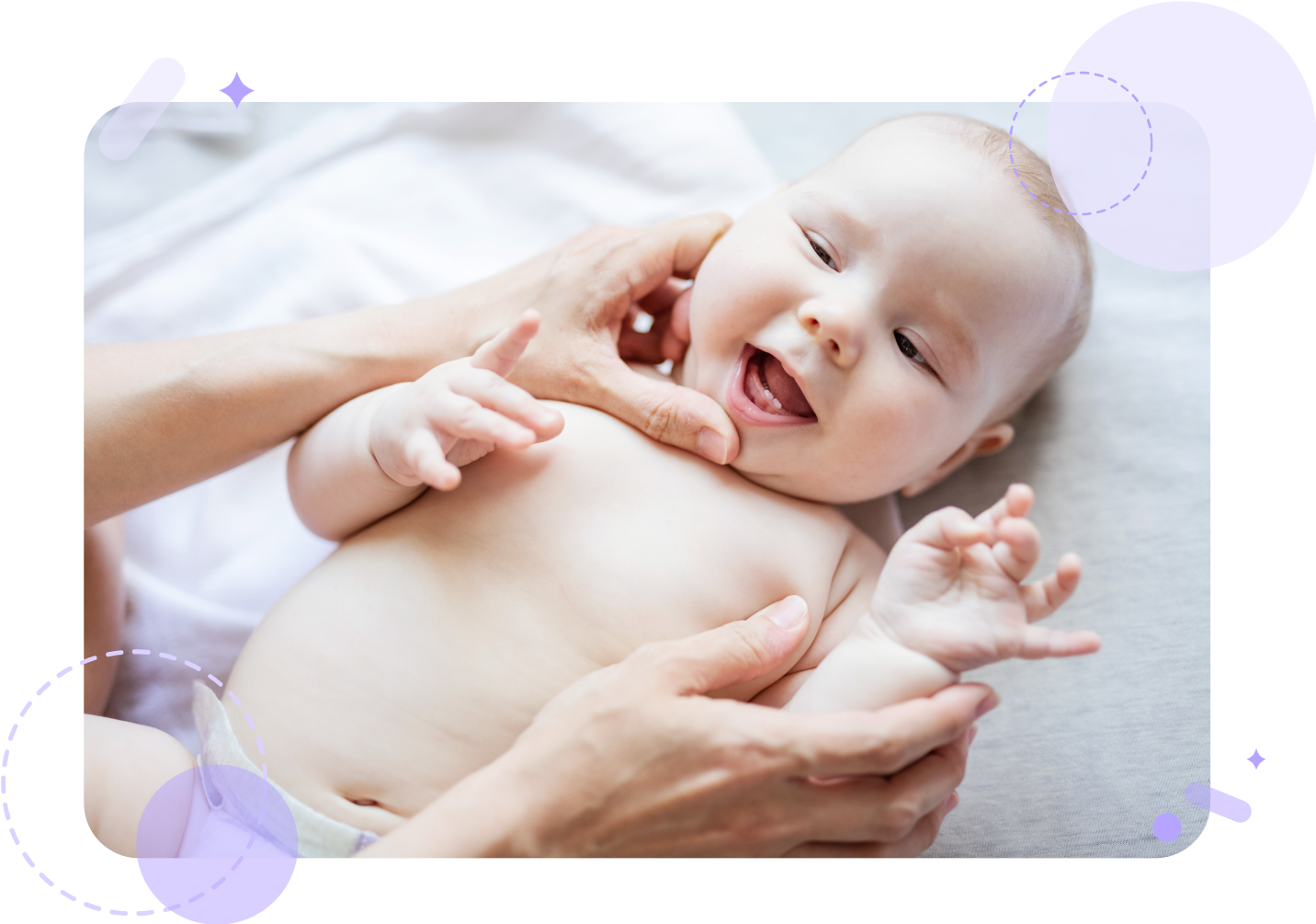
Vision development begins to take form in the womb and continues to develop after birth. At birth, your baby’s vision is limited to 8 to 10 inches from their face as their eyes are not yet well coordinated.
It takes time for your baby’s vision to fully develop in all its aspects, such as tracking moving objects and focusing their gaze on objects further away within their surroundings.
As your baby develops, their vision will improve, and babies can see much farther at distances of 13 feet (4 to 6 meters) away. Sight development also helps their acute peripheral senses to improve, allowing them to focus on objects in motion.
The Importance of Distant Vision
Your baby’s constantly improving vision is critical for promoting depth perception, navigation, and cognitive development. Contrary to how perfect your baby’s eyes may look at birth, infants are not born with a perfectly functioning vision.
Much like learning to grab, sit, or crawl, babies need time to figure out how to perceive the world around them with their eyes. Proper visual development empowers your baby to focus on objects and people in the distance, encouraging healthy social growth, like recognizing people and familiarity with their surroundings.
By 9 to 12 months old, your baby’s vision improves boundlessly regarding their ability to see further and qualitatively speaking. The onset of depth perception and the capacity to follow fast-moving objects are especially impressive.
With improved eye vision, head control and muscle strength and their ability to sit, babies can track objects such as toys or parents with their eyes in all directions.
How Caregivers Can Help
You can hang a mobile toy in your baby’s crib as a visual stimulus to encourage eye-tracking, focus, and hand-eye coordination. Moving their beloved toys in and out of reach to promote eye focus and tracking at a distance.
Playing peek-a-boo with your face or hiding and revealing objects also encourages recognition and tracking.
Being able to track such objects will also help your baby become fully aware of almost everything that happens around them; you won’t be able to hide anything anymore! The increased awareness stemming from this capability also assists in your baby’s proper cognitive awareness and development.
 Back
Back
